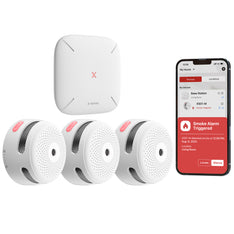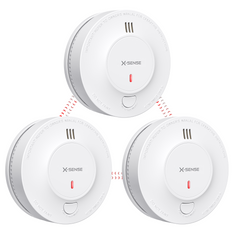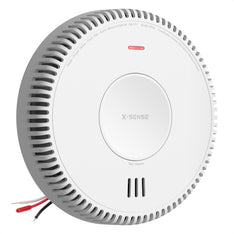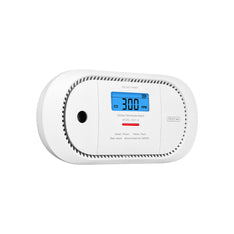Everything You Need to Know About Smoke Alarms
Wed, May 20, 2020
We all know that it becomes difficult to extinguish a household fire because not many of us know what to do. Installing smoke alarms in home may alert you and enable you to seek help immediately. In this article, we are going to tell you what you should know about smoke detectors such as the types and how smoke alarm works. Moreover, we are making it easier for you to choose smoke alarm and tell you what the best smoke alarm is for you.
The Types of Smoke Detectors
Smoke sensors are of three different, ionization sensors and photoelectric sensors, a combination of both ionization and photoelectric alarms.
1. The different types of sensors
Ionization Smoke Detectors: For flaming fires, the ionization smoke alarms are more useful because they respond more quickly to fires with flames. There are two electrically charged plates in an ionization smoke detector. A radioactive material is present between these two plates, and causes the air to ionize. This creates a current which flows between these two plates. In case of fire, smoke that enters the alarm reduces the current’s flow by disrupting the ions. This activates the alarm.
Photoelectric Smoke Detectors: As compared to ionization smoke detectors, photoelectric smoke alarms respond more quickly to smoldering fires. The photoelectric smoke alarm uses light or a photoelectric sensor in the sensing chamber. This light source doesn’t fall on the sensor but when smoke comes inside the chamber, it causes the light to reflect on the sensor. This triggers the alarm.
Although it doesn't matter what source these both ionization and photoelectric smoke detectors use, they both detect any house fire. But for optimal protection, you may consider using the smoke alarm that uses both the technologies or that is a combination of both.
2. The different types of power connectivity
In terms of power supply, smoke detectors are divided into two categories; battery-operated and hard-wired smoke detectors.
Battery-operated smoke detectors: Most smoke detectors are powered by batteries. In general, smoke detectors don't use a lot of power. Moreover, battery-operated smoke detectors require little maintenance per year. However, the battery of such smoke detectors has a limit and it would perform its function with a dead battery. Thus you have to be vigilant enough to replace batteries when required.
Hard-wired smoke detectors: A hard-wired smoke detector is an alternative to a battery-operated smoke detector. Hard-wired smoke detectors are installed into your home's electrical system and get its power supply from there. This is more reliable and it also needs less maintenance. However, hard-wired smoke detectors also use a battery, but this battery is not the primary power source. These batteries are used in the time of emergency such as a power outage so that you always stay protected.
How Effective are Smoke Detectors
- Smoke alarms, as the name suggests, detect the smoke in case of fire and also notify of the fire so that occupants can escape timely.
- In the fire safety world, smoke alarms have been working for the last 30 years.
- It is estimated that 70% of deaths due to fire occur in homes that don't have smoke detectors.
- Thus, the presence of an active smoke detector can reduce the risk of deaths by 50%. And if every homes have smoke alarms, approximately we can save 890 lives annually.
- In the NYS residential code, section 313, it is recommended that you place the smoke alarm in all the level of the home including, inside as well as outside the every bedroom and also the basement.
- Smoke alarms are of two different types, in terms of sensors that they use. According to the National Fire Protection Association, you should have installed both types of smoke alarms in home, place them either side by side or you can contain them in a dual unit.
- Ionization technology: Ionization sensors in smoke alarms more efficiently detect small smoke particles. These small smoke particles are produced in large amounts by flaming fires. Such fires rapidly consume combustible materials and spread quickly.
- Photoelectric technology: Photoelectric sensors in smoke detectors detect large smoke particles. Smoldering fires produce these smoke particles in great amounts. Before bursting into flames, such fires smolder for hours.
- Home occupants must regularly maintain smoke alarms to make sure that they are working properly.
- Using a vacuum cleaner attachment, regularly remove debris and dust from the smoke detector.
- Using your fingers test batteries at least once a month. Don’t use a pole or a broom handle.
- Every 10 years, make sure you replace smoke alarms.
Now that you are well aware of the smoke alarms and their types and how do they work, you may be wondering what would be the best smoke alarm for you. Some of the well-known brands of smoke detectors include the Roost, Fire 120v hardwired smoke alarm, and Kidde,
To find out more about smoke detectors and fire prevention, check the website of National Fire Protection Association.
You may also like: What Are Smoke Detector Requirements in a House?






